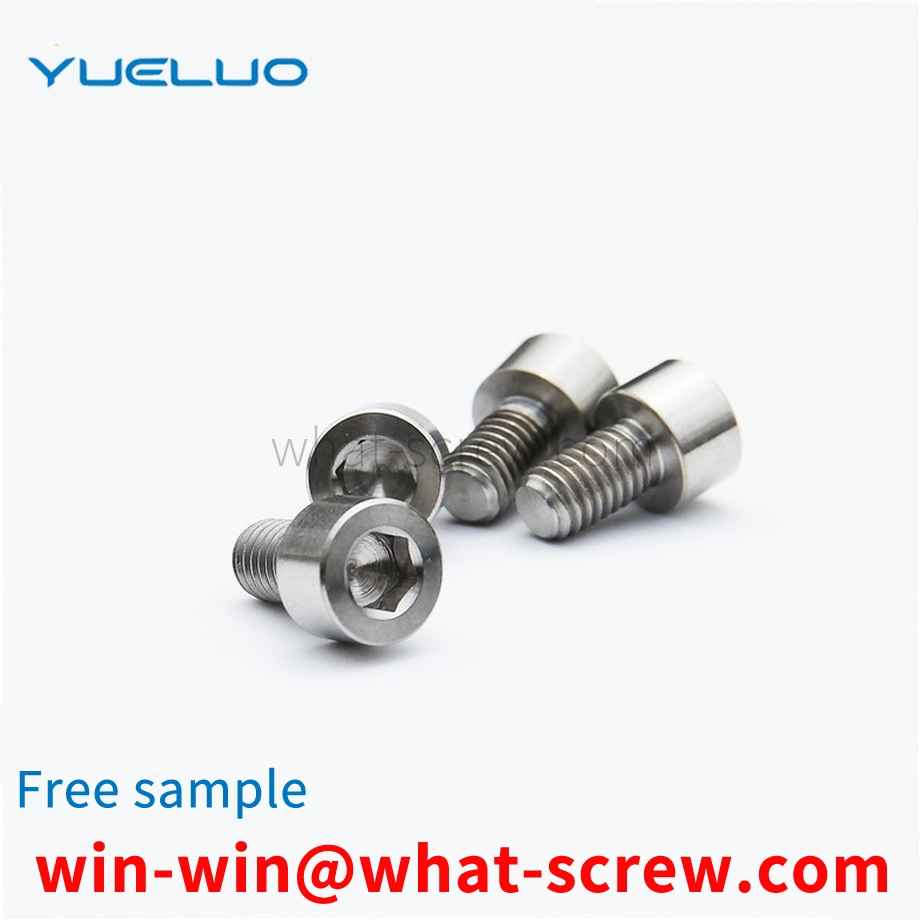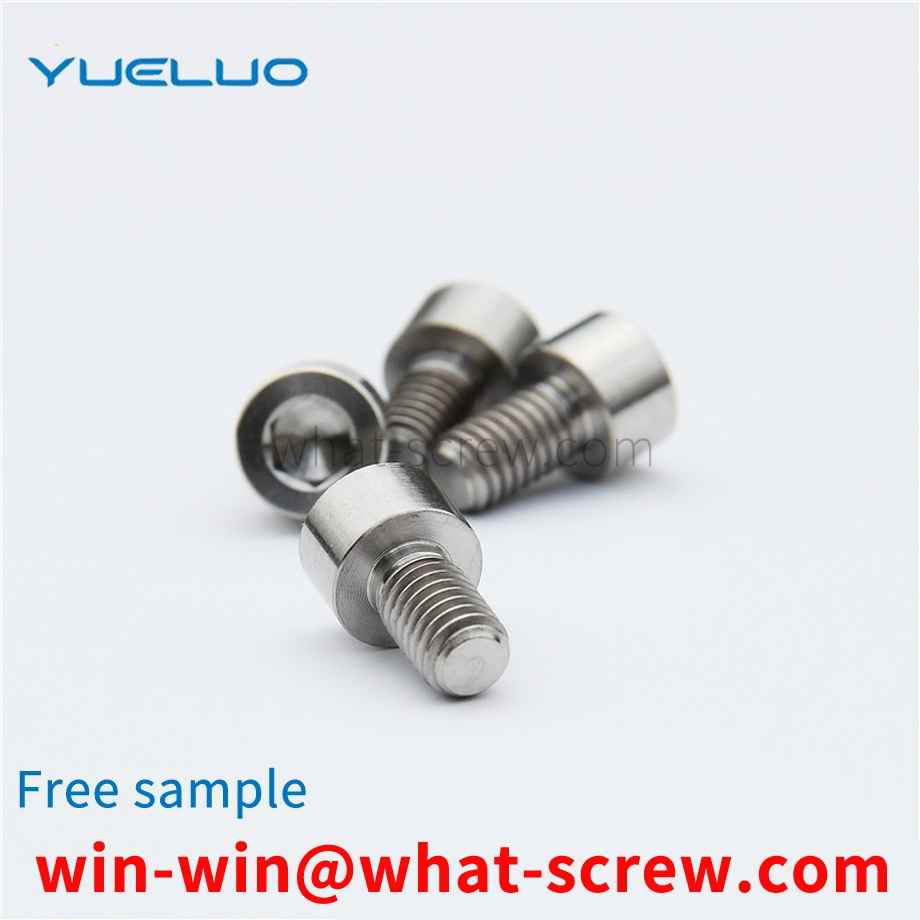1. First remove the sludge on the surface of the broken head of the broken screw, use the center gun to kill the center gun of the section, and then use an electric drill to install a drill bit with a diameter of 6-8 mm to drill the hole in the center of the section, pay attention to the hole must be drilled through. After the hole is drilled through, remove the small drill bit and replace it with a drill bit with a diameter of 16 mm, and continue to expand and drill through the hole of the broken bolt. 2. Take a welding rod with a diameter of less than 3.2 mm and use a medium and small current to carry out surfacing welding from the inside to the outside in the hole of the broken bolt. Take half of the entire length of the broken bolt at the beginning of the surfacing welding. When starting the surfacing welding, the arc should not be too long. In order to avoid burning through the outer wall of the broken bolt, surfacing to the upper end face of the broken bolt, and then continue surfacing to weld a cylinder with a diameter of 14-16 mm and a height of 8-10 mm. 3. After the surfacing is completed, hammer the end face with a hammer to make the broken bolt vibrate along its axial direction. Due to the heat generated by the previous arc and the subsequent cooling plus the vibration at this time, the broken bolt and the thread of the body will be loose in between. 4. Carefully observe, when it is found that a small amount of rust leaks from the fracture after the knock, take the M18 nut and put it on the surfacing column head and weld the two together. 5. After welding, use a torx wrench to cover the nut while it is still hot, and twist it back and forth, or tap the end face of the nut with a small hand hammer while twisting back and forth, so that the broken bolt can be taken out. 6. After taking out the broken bolt, use a suitable tap to process the thread in the frame to remove rust and other debris in the hole.
As a standard part, it should have its own general specifications. For hexagonal nuts, the commonly used standards are: GB52, GB6170, GB6172 and DIN934. The main differences between them are: GB6170 is thicker than GB52, GB6172 and DIN934. Thick from DIN934, commonly known as thick nut. The other is the difference between the opposite sides, the opposite sides of DIN934, GB6170 and GB6172 in the M8 nut series are 13MM smaller than the opposite side 14MM of GB52, and the opposite sides of M10 nuts, DIN934 and GB52 are 17MM. The opposite side of GB6170 and GB6172 should be 1MM larger, M12 nut, DIN934, GB52's opposite side is 19MM larger than GB6170 and GB6172's opposite side 18MM is 1MM larger. For M14 nuts, the opposite side of DIN934 and GB52 is 22MM, which is 1MM larger than the opposite side of GB6170 and GB6172, which is 21MM. The other is the M22 nut. The opposite side of DIN934 and GB52 is 32MM, which is 2MM smaller than the opposite side of GB6170 and GB6172, which is 34MM. (Besides the thickness of GB6170 and GB6172 are the same, the width of the opposite side is exactly the same) The rest of the specifications can be used in general without considering the thickness.
There are many names for bolts, and everyone may have different names. Some people call them screws, some people call them bolts, and some people call them fasteners. Although there are so many names, they all mean the same thing, they are all bolts. A bolt is a generic term for a fastener. A bolt is a tool that uses the physical and mathematical principles of the oblique circular rotation and friction of an object to fasten the parts of the object step by step. [1] Bolts are indispensable in daily life and industrial production. Bolts are also known as the rice of industry. It can be seen that the bolts are widely used. The application scope of bolts includes: electronic products, mechanical products, digital products, electrical equipment, electromechanical products. Bolts are also used in ships, vehicles, hydraulic engineering, and even chemical experiments. Anyway, bolts are used in many places. Especially the precision bolts used in digital products. Miniature bolts for DVD, cameras, glasses, clocks, electronics, etc.; general bolts for televisions, electrical products, musical instruments, furniture, etc.; large bolts and nuts are used for engineering, construction, and bridges; transportation equipment, aircraft, trams, automobiles etc. are used together with large and small bolts. Bolts have important tasks in industry. As long as there is industry on the earth, the function of bolts will always be important.
Today's advanced manufacturing represented by large aircraft, large power generation equipment, automobiles, high-speed trains, large ships, and large complete sets of equipment has entered an important development direction. As a result, fasteners will enter an important stage of development. High-strength bolts are used for the connection of important machinery, and repeated disassembly or various installation torque methods require extremely high-strength bolts. Therefore, the quality of its surface condition and thread accuracy will directly affect the service life and safety of the host. In order to improve the friction coefficient and avoid corrosion, seizure or sticking during use, the technical requirements stipulate that the surface should be treated with nickel phosphorus plating. The thickness of the coating is guaranteed to be within the range of 0.02 to 0.03 mm, and the coating is uniform, dense, and free of pinholes.
At present, injection molding screws are widely used in various electronic and automotive components, including a body, the middle of which is provided with a through hole 3, the body head 1 has a hexagonal cross-section, and the tail 2 is provided with screw teeth. When in use, the middle through hole 3 of the main body will first put the wire harness, and then fix it by injection molding from the head I, and the threads of the tail 13 should be connected and installed with other components. Because the head I of the main body is hexagonal, the torque provided after injection molding is insufficient. Therefore, after the external thread is installed and connected with other components, the head is prone to slip, the installation is not reliable, and there is no push-pull force, resulting in product failure and increased safety hazards.
We have many years of experience in the production and sales of screws, nuts, flat washers, etc. The main products are: fastening and locking flat head cylindrical rivet nuts, miniature screws, carbon steel hexagon head with intermediate nuts, copper air-hole rivets and other products, We can provide you with the right fastener solution for you.



















 Service Hotline
Service Hotline




